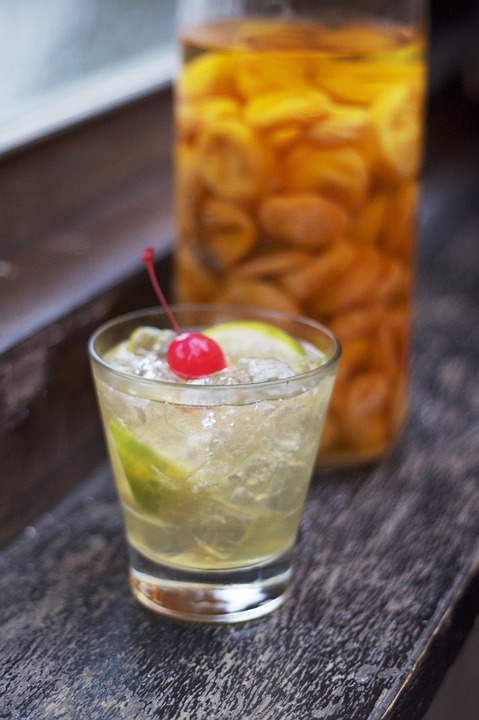Introduction
In recent years, there has been a growing trend among health-conscious consumers to seek out low sugar ready-to-drink (RTD) options. This shift in consumer behavior can be attributed to a variety of factors, including increased awareness of the negative health effects of excess sugar consumption and a desire for healthier beverage choices. In this report, we will explore why health-conscious consumers are gravitating towards low sugar RTD options and examine the implications for the industry.
Health Concerns Driving Demand
Rising Rates of Obesity and Diabetes
One of the primary reasons driving the demand for low sugar RTD options is the rising rates of obesity and diabetes globally. According to the World Health Organization (WHO), obesity has nearly tripled since 1975, with over 1.9 billion adults considered overweight and 650 million classified as obese. Similarly, the prevalence of diabetes has also been on the rise, with an estimated 422 million adults living with the disease in 2014.
Consumers are becoming more aware of the link between excessive sugar consumption and these chronic health conditions, leading them to seek out healthier alternatives. Low sugar RTD options offer a convenient and accessible way for individuals to reduce their sugar intake without sacrificing taste or convenience.
Increased Focus on Overall Wellness
Another key driver behind the demand for low sugar RTD options is the growing focus on overall wellness and holistic health. Consumers are becoming more proactive about their health and are prioritizing products that support their well-being. Low sugar RTD options align with this trend by providing a healthier alternative to traditional sugary beverages.
Furthermore, many health-conscious consumers are also mindful of the impact of their food and beverage choices on the environment. Low sugar RTD options often use natural ingredients and sustainable packaging, appealing to consumers who prioritize sustainability and eco-friendliness.
Industry Response to Consumer Demand
Market Growth and Expansion
The increasing demand for low sugar RTD options has prompted a response from the beverage industry, with many companies introducing new products to cater to health-conscious consumers. Market research firm Grand View Research projects the global RTD tea and coffee market to reach $116.13 billion by 2025, driven in part by the demand for healthier options.
Major beverage companies such as Coca-Cola, PepsiCo, and Nestle have all introduced low sugar RTD options to their product portfolios in response to consumer preferences. These companies are investing in research and development to create innovative formulations that reduce sugar content without compromising taste or quality.
Financial Considerations
From a financial perspective, offering low sugar RTD options can be a lucrative opportunity for beverage companies. Research from Nielsen indicates that products with health-related claims, such as “low sugar” or “natural ingredients,” tend to command higher prices and attract a premium segment of consumers willing to pay more for healthier options.
Additionally, the growing demand for low sugar RTD options presents an opportunity for companies to differentiate themselves in a crowded market and attract new customers. By tapping into the health and wellness trend, beverage companies can expand their consumer base and increase market share.
Challenges and Opportunities
Formulation and Taste
One of the challenges faced by beverage companies in developing low sugar RTD options is creating formulations that are both healthy and appealing to consumers. Achieving the right balance of sweetness and flavor without relying on excessive sugar can be a complex process that requires extensive research and testing.
However, companies that successfully overcome this challenge can position themselves as leaders in the health and wellness space, gaining a competitive advantage in the market. By investing in innovative ingredients and flavor profiles, beverage companies can meet consumer expectations for low sugar RTD options that are both nutritious and delicious.
Marketing and Branding
Effective marketing and branding play a crucial role in the success of low sugar RTD options. Companies must communicate the benefits of their products to consumers and differentiate themselves from competitors in a crowded market. Strategies such as influencer partnerships, social media campaigns, and product sampling can help raise awareness and generate buzz around new low sugar RTD offerings.
Furthermore, building a strong brand identity centered around health and wellness can help beverage companies establish credibility with health-conscious consumers. By positioning their products as a part of a balanced and healthy lifestyle, companies can foster brand loyalty and drive long-term growth.
Conclusion
In conclusion, the demand for low sugar RTD options among health-conscious consumers is driven by a combination of health concerns, wellness trends, and environmental considerations. Beverage companies are responding to this demand by introducing new products, investing in research and development, and capitalizing on the financial opportunities presented by the growing market.
As the market for low sugar RTD options continues to expand, companies that prioritize formulation, taste, marketing, and branding will be well-positioned to succeed in meeting the needs of health-conscious consumers. By embracing this trend and adapting their product offerings accordingly, beverage companies can tap into a lucrative market segment and drive sustainable growth in the years to come.




